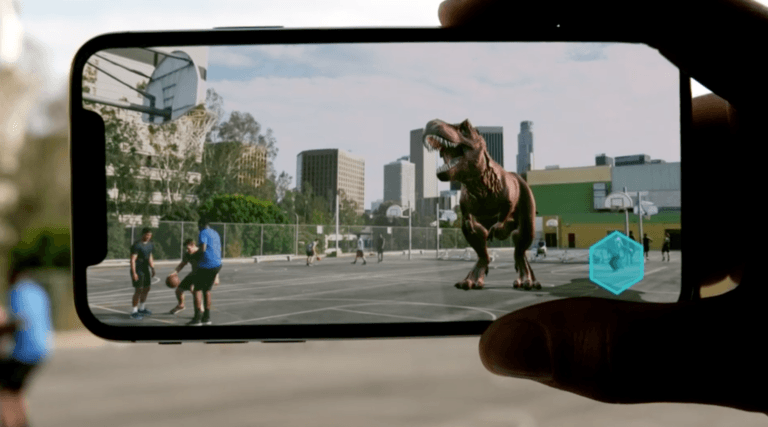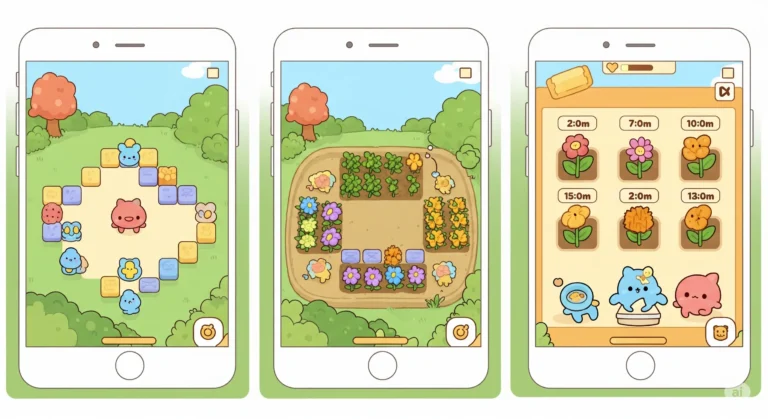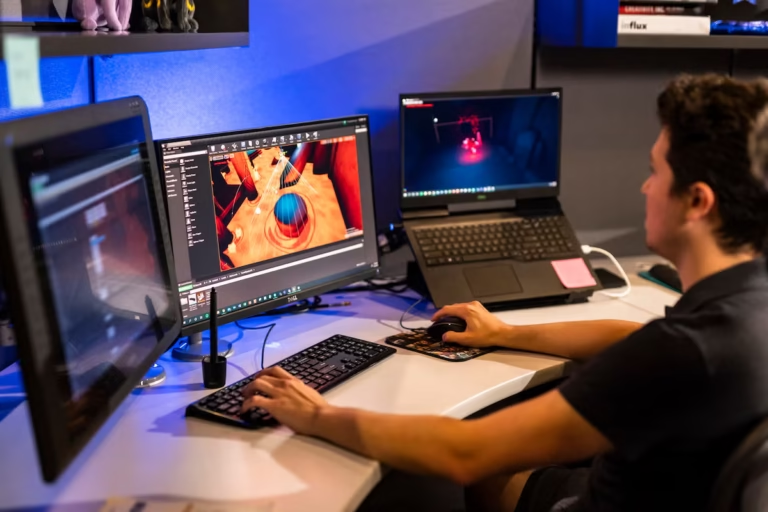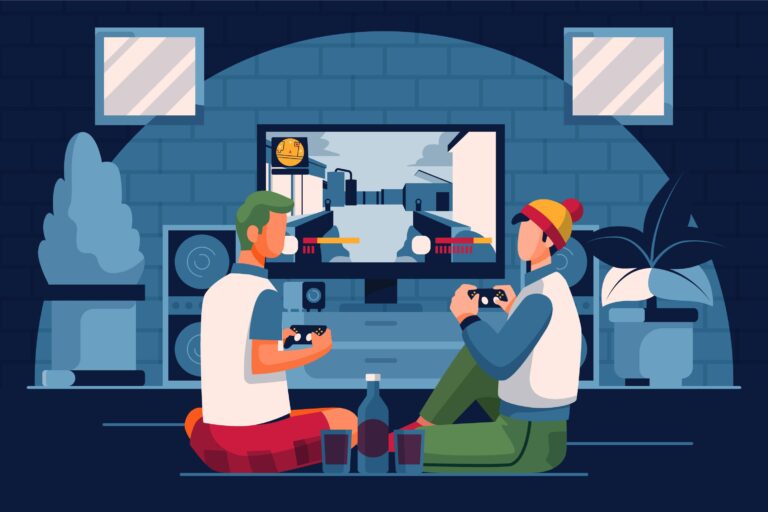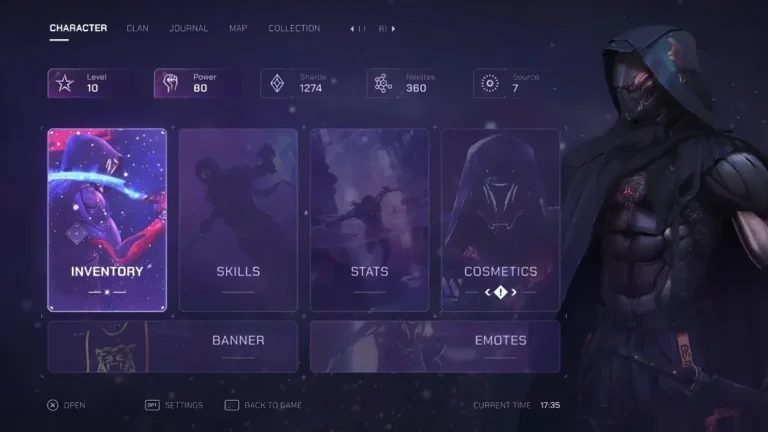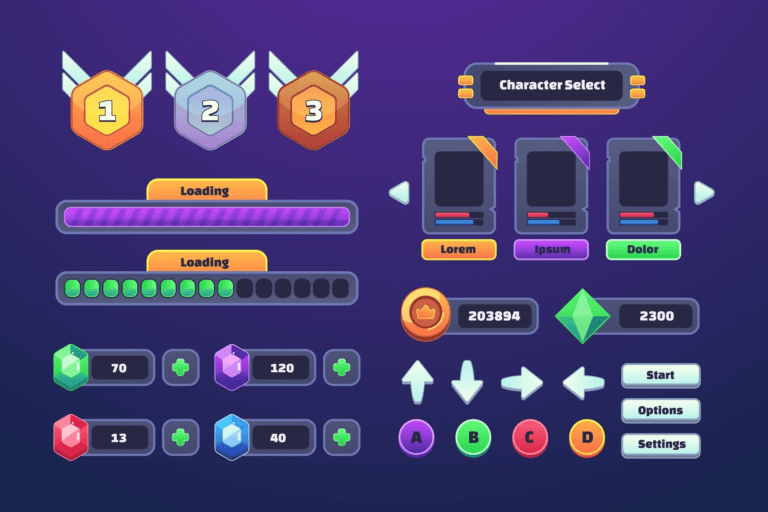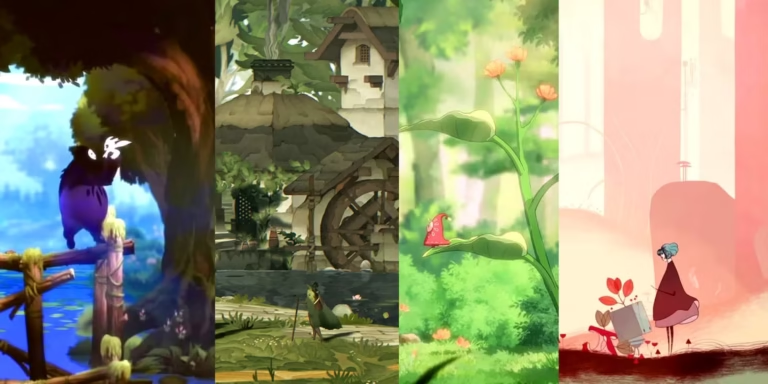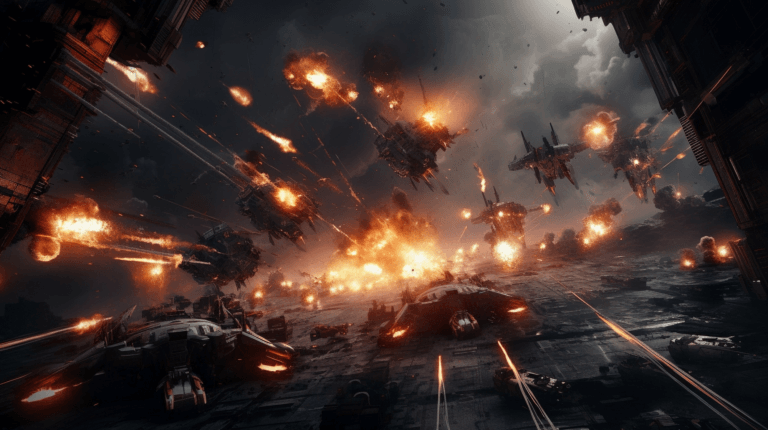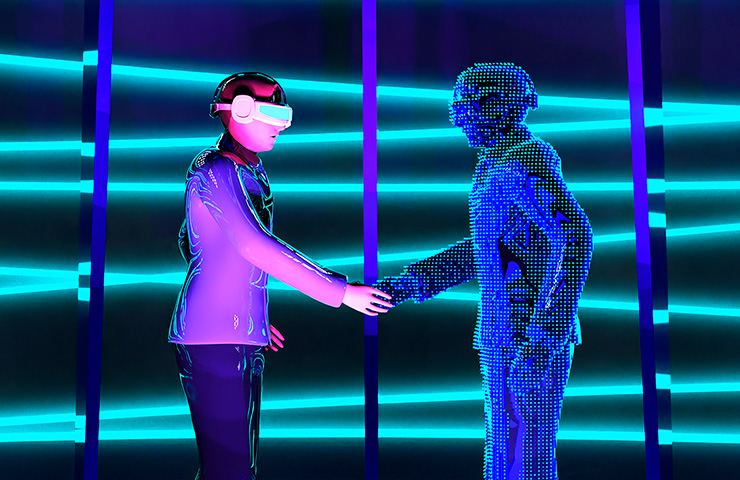Outsourcing game art can provide great value for game studios looking to fill talent gaps or manage costs. However, figuring out realistic pricing for outsourced 2D and 3D art can be challenging. Rates vary significantly based on project scope, art styles, studio locations, and other factors.
This game art outsourcing price guide provides an overview of typical price ranges for different types of art outsourcing, including 2D art and 3D art. It also covers factors impacting costs, strategies for maximizing value and minimizing cost, and outsourcing vs. in-house art pricing.


Need Game Art Services?
Visit our Game Art Service page to see how we can help bring your ideas to life!
How Much Does 2D Art and 3D Art Cost?
2D game art outsourcing prices can be found anywhere from $1000 (€950) for a simple 2D game to $10000 (€9500) for complex ones. And 3D game art outsourcing prices can be found anywhere from $5000 (€4800) for simple 3D games to $50000 (€48000) for complex ones.
The cost of game art outsourcing can vary greatly depending on a number of factors such as art style, number and complexity of assets (characters, environments, props, animations, UI, etc.), technical specifications, time, etc.
Typical Price Ranges by Art Type
2D Game Art Outsourcing Price
2D Art Service | Price List (USD) | Price List (EUR) |
|---|---|---|
2D Character (Including sketch and paint) | $250 – $1000 | €240 – €950 |
2D Environment (Including sketch and paint) | $500 – $2000 | €480 – €1,900 |
2D Prop (Including sketch and paint) | $200 – $800 | €190 – €760 |
UI Design (Per Page) | $100 – $400 | €95 – €380 |
2D Character/Prop Rig | $200 – $800 | €190 – €760 |
2D Character/Prop Animation (Per Cycle) | $100 – $300 | €95 – €285 |
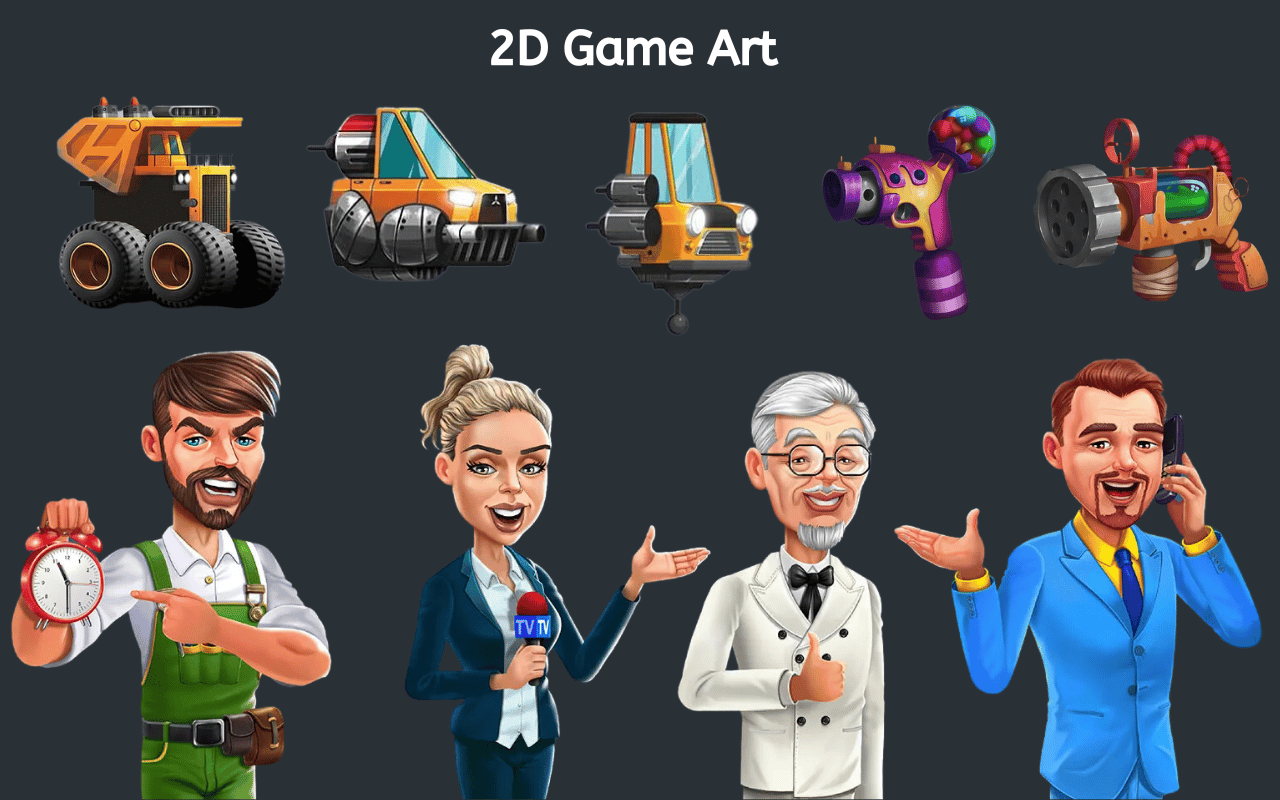
3D Game Art Outsourcing Price
3D Art Service | Price List (USD) | Price List (EUR) |
|---|---|---|
3D Character (Including concept art, modeling, and texturing) | $1000 – $5000 | €950 – €4,800 |
3D Environment (Including concept art, modeling, and texturing) | $1500 – $10,000 | €1,450 – €9,500 |
3D Prop (Including concept art, modeling, and texturing) | $500 – $2000 | €480 – €1,900 |
3D Character/Prop Rig | $500 – $2000 | €480 – €1,900 |
3D Character/Prop Animation (Per Cycle) | $200 – $500 | €190 – €480 |
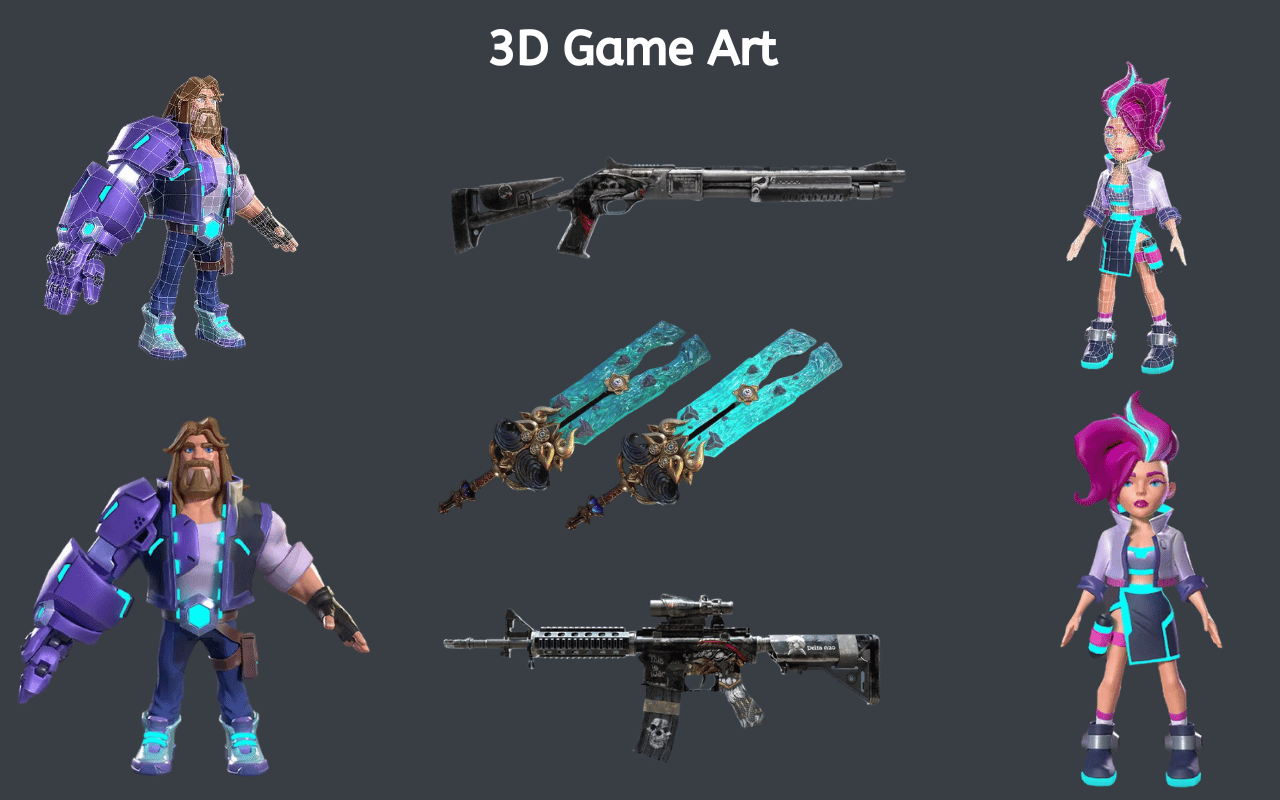
Read More: 2D vs. 3D Games
Influencing Factors of Game Art Costs
Art Style
The art style chosen for a game can significantly impact the cost. Stylized, cartoonish game art styles are generally faster and cheaper to produce compared to realistic, photorealistic art.
Level of Detail and Complexity
The level of detail and complexity for each asset is closely related to the art style. Highly detailed 3D models with millions of polygons, 8K texture maps, and complex materials take significantly more artist time compared to simpler assets, which can greatly affect the 3D art outsourcing cost.
Number of Assets
The total quantity of game art assets impacts overall budgets. A project with 10 highly detailed characters is more expensive than one with those same 10 characters at reduced detail. The number of assets and cumulative detail level matter.
Technical Considerations
Game art must integrate into game engines and function smoothly in real-time rendering, and environments need to be structured for culling and LODs. Those technical considerations also impact art production timelines and pricing.
Location
Artists in North America or Europe cost multiples more per hour compared to Asia and Eastern Europe. There are always tradeoffs between location cost vs. quality and efficiency.
Experience Level
Senior artists with years of experience and specialized skills will have higher hourly rates but also greater productivity. Their expertise may offset higher wages. Junior artists may bring cheaper hourly pricing but take longer to complete tasks.
Timelines
Rushed production schedules almost always increase asset cost and pricing. Realistic timelines aligned with asset numbers, team size, and complexity help optimize outsourcing costs.
Get a Quote
Interested in knowing how much your game art project will take? Contact us today for a detailed quote and let’s create something amazing together.
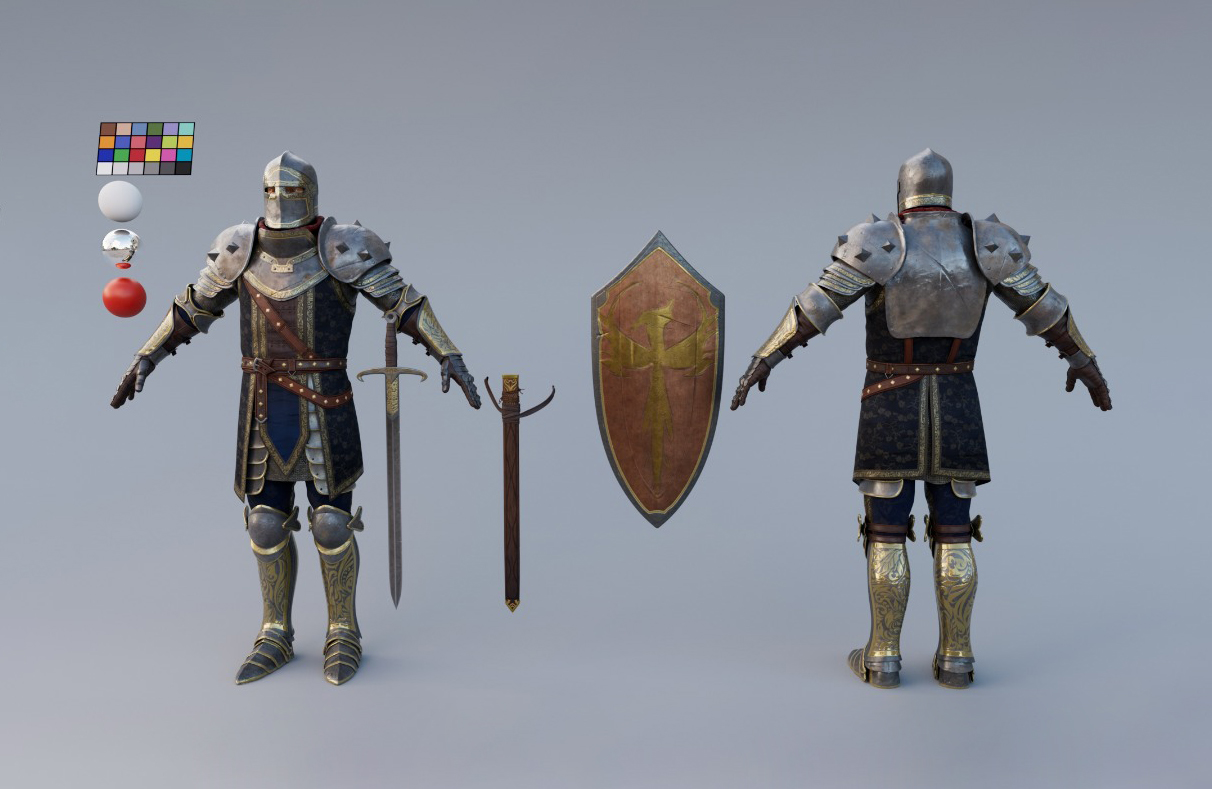
Game Art Outsourcing vs. In-House Costs
Game art outsourcing services should also be compared against the costs of creating art in-house. Some considerations when comparing:
Salaries – In-house artist salaries vary by experience and location. Outsourcing can provide flexibility.
Team size – Outsourcing studios may provide larger teams to scale.
Scalability – Outsourcing allows studios to ramp teams up and down as needed.
Software, Hardware – Outsourcing studios absorb the costs of tools and equipment.
Overhead – No office space or benefits to manage.
Training – Outsourcing studios maintain skills; avoid costs to train in-house.
Specialization – Access to skills not available locally.
Timelines – Outsourcing studios can speed up art creation.
Location-Based Pricing
The costs of art outsourcing also vary widely based on location. In general, a game art outsourcing studio located in regions with lower costs of living can provide art at lower prices.
Some examples of average hourly rates for outsourced game art by location:
United States: $40-$60 (€38 – €57) per hour
Western Europe: $35-$50 (€33 – €47) per hour
Eastern Europe: $25-$35 (€23 – €33) per hour
Asia: $15-$25 (€14 – €24) per hour
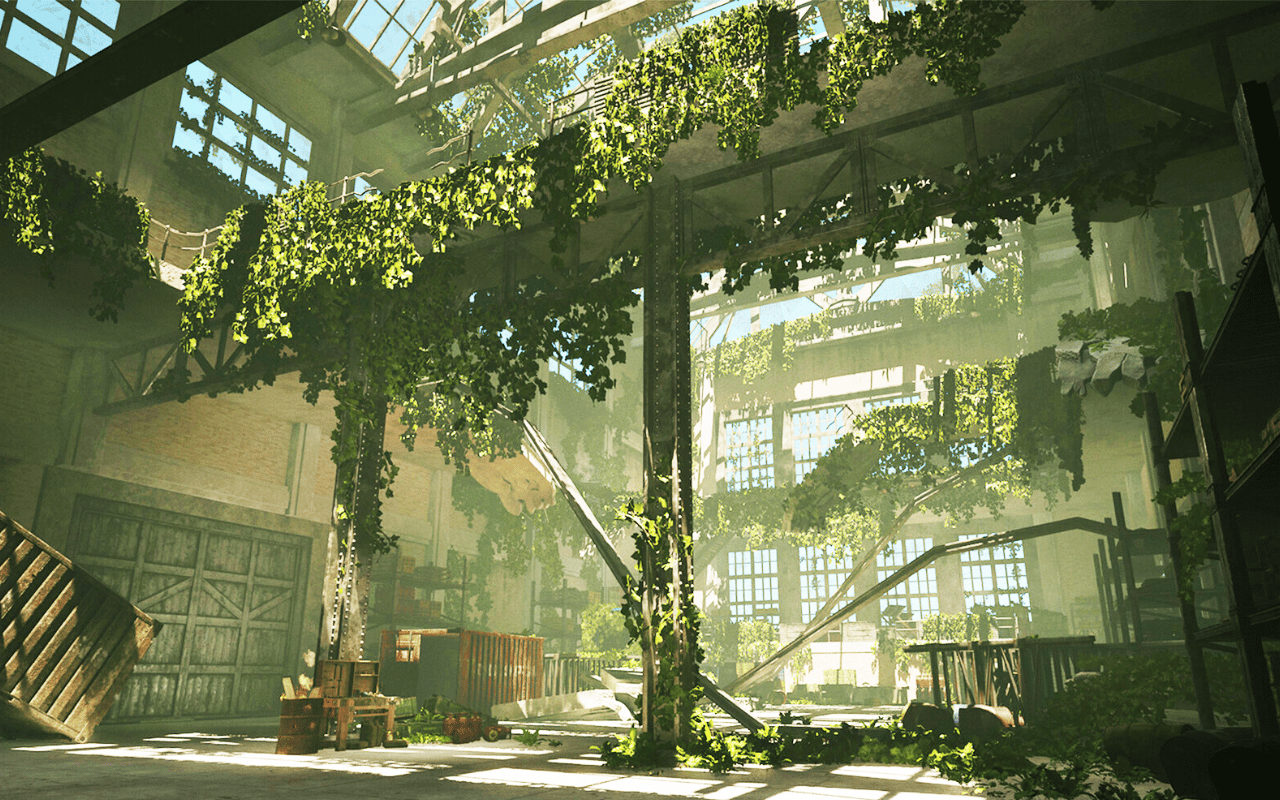
Hidden Costs of Art Outsourcing
File Management
Outsourced art means asset hand-off and cross-studio workflows. File naming conventions, organization, version control, and transfer tools add overhead. Larger art budgets should allocate resources to IT/pipeline tools. The project may need extra payments for having more Dropbox or server space.
Integrating Art
Even with clear specifications, outsourced art may require tweaks and fixes to integrate into the game engine and specific project architecture. Hidden costs come from unplanned engineer time for imports, optimizations, and debugging.
Contracting & Payments
Legal time spent developing outsourcing agreements, statements of work, NDAs, and invoices/payments should be accounted for in the budget. Extra overhead comes from translating contracts to different languages or hiring lawyers to check the contracts.
Changes and Revision
Art direction changes mid-project, or inconsistent feedback means revisions that make assets diverge from initial pricing. So, for more changes and revisions, studios may charge you more.
Key Considerations While Outsourcing
Communications Overhead
Daily meetings, asset reviews, and direction across time zones, languages, and tools burn project hours quickly. Make sure outsourcing estimates account for this communications tax.
Geographic Time Zones
Offshore outsourcing can mean late-night calls or delayed responses from distant time zones. Overlapping collaborative hours may be limited. Schedule wisely.
Quality Assurance
Adding a buffer for testing and validating outsourced art is crucial. Spot checks for models, LODs, textures, materials, and performance help avoid downstream issues.

Strategies to Maximize Value and Minimize Price
1. Focus on Important Matters
Prioritize higher-cost art like main characters and hero props over background filler items. Outsource key items that most directly impact player experience. Keep secondary assets in-house or use pre-made assets.
2. Vertical Slice
Outsource a small vertical slice first to test the game art pipeline, like designing 3 main characters instead of 10. Then, scale up confidently for a full project based on the feedback. Avoids wasted effort from mismatched expectations.
3. Using AI
Emerging AI art tools like Midjourney can quickly generate concepts, and model sculpts for pennies compared to concept art outsourcing studios 3D artists. Use AI to explore ideas, not whole art, before committing final assets to vendors.
4. Using Online Assets
Subscription services like Humble Bundle, TurboSquid, or ArtStation allow cheap one-off purchases of generic textures, materials, models, and unimportant assets. Use to fill gaps instead of custom outsourced art.
5. Planning
Planning is one of the most important parts of each project. Detailed art budgets, style guides, asset lists, schedules, and team resourcing plans prevent scope creep and confusion. Tight documentation ensures outsourcers work efficiently.
Conclusion
Outsourcing game art can provide great flexibility, scalability, and access to specialized talent for studios. However, realistic pricing expectations require careful research and planning tailored to specific project needs.
The guide provided realistic price ranges, cost breakdowns, pricing factors, hidden costs, and tips on maximizing outsourcing value for art-intensive game projects. While outsourcing art is not ideal for every situation, this framework equips studios to evaluate if and when it can be a smart resourcing strategy, given the many considerations involved.
